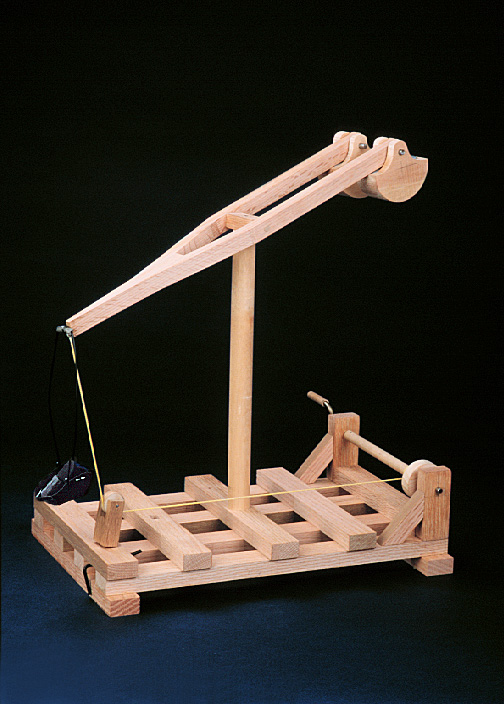Trebuchet, Siena, early 15th century CE
by Ae-Ree Nam '99 (visiting), Swan Park '01 and Nisha Shah '01

The Trebuchet was invented by Mariano Taccola, "the Sienese Archimedes."
This war machine was invented during the Middle Ages (around 1400 AD) in order to
destroy the great walls of the enemy palaces. The trebuchet was designed to throw heavy
stones against the walls and simultaneously kill the enemies. The trebuchet was made of
wood and iron. This destructive machine was 15m tall and so heavy that hundreds of strong
men were required to carry it. The trebuchet has two crates at the opposite side of the
basket in which the stone is to be put. The crates are filled with heavy stones so that
when the iron rod, which keeps the basket from flying, is pulled out, the crates will fall
down and the basket will throw the stone against the enemy walls. If the crates are heavy,
then the basket will fly with a stronger force. After throwing the stone, the basket is
brought down by the handle on the base of the trebuchet.

